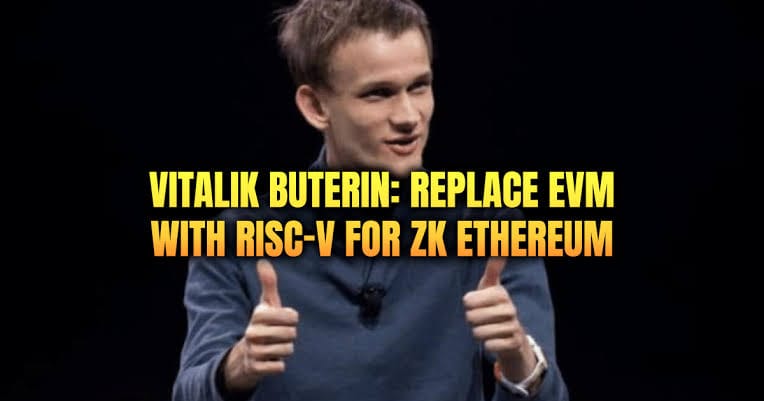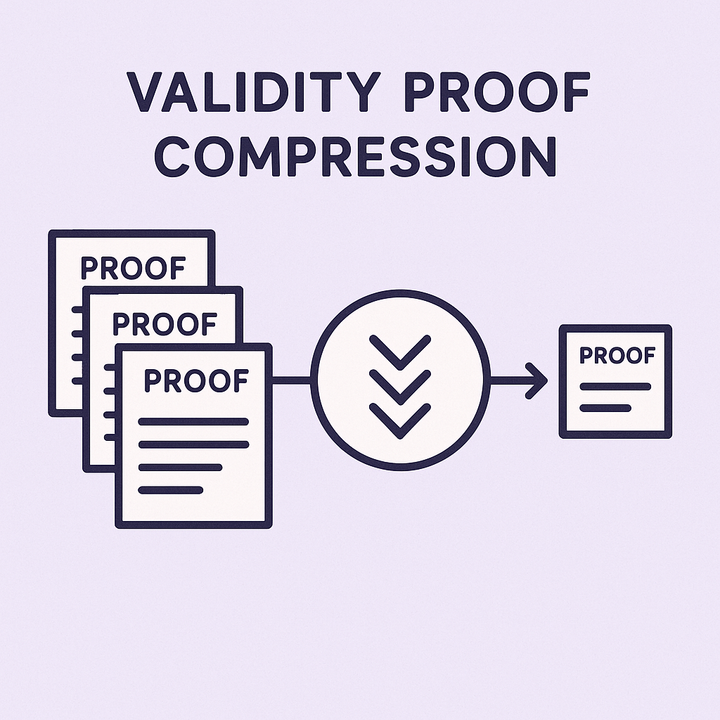RISC-V Revolution: What Ethereum’s New VM Means for Mitosis’s Cross-Chain DeFi Hub

Introduction
Ethereum’s execution layer—powered by the EVM—has been the backbone of its smart-contract magic since 2015CoinDesk. Yet as gas fees balloon and zero-knowledge rollups promise new scaling horizons, the EVM’s design shows its age. Enter RISC-V: an open-source, hardware-style instruction set architecture (ISA) celebrated for simplicity, extensibility, and built-in cryptographic primitives. Vitalik’s proposal to swap the EVM for a RISC-V VM isn’t a quick fix—it’s a long-term strategy to reimagine execution at the protocol’s coreBlockworks.
In this article, we’ll explore:
- Why the EVM bottlenecks matter
- What Vitalik’s RISC-V VM entails
- Technical advantages and challenges
- Deployment strategies and ecosystem impact
- Practical takeaways and next steps
Along the way, we’ll link to internal Mitosis University resources to deepen your understanding of related concepts.
1. Why the EVM Bottlenecks Matter
A. Growing Execution Costs
Ethereum’s gas fees have soared whenever on-chain activity spikes. The EVM’s stack-machine design was never optimized for efficient proof-generation or parallel executionCoinMarketCap. As zero-knowledge (ZK) rollups translate EVM bytecode into proof circuits, developers face an extra compilation layer—turning EVM → RISC-V → SNARK—which adds latency and costCryptoPotato.
B. ZK-VM Proving Overhead
Existing ZK-EVMs (e.g., Polygon Miden, Risc0) rely on RISC-V under the hood precisely because its ISA maps more directly to proving systems. Yet current tooling still compiles Solidity to EVM bytecode first, then to RISC-V—incurring “double translation.” Vitalik estimates over 100× efficiency gains if contracts compile straight to RISC-V, bypassing redundant stepsCoinDeskcrypto.news.
2. What Vitalik’s RISC-V VM Entails
A. Core Proposal Highlights
- Direct Compilation: Languages like Solidity and Vyper would compile to RISC-V instructions instead of EVM bytecodeCoinMarketCap.
- Syscall-Driven Design: Primitive operations (e.g., SLOAD, CALL) become syscalls rather than fixed opcodes, simplifying the base ISACoinMarketCap.
- Backward Compatibility: Legacy EVM contracts continue to run, either via a dual-VM model or through an EVM-on-RISC-V interpreter layerFellowship of Ethereum MagiciansCryptoPotato.
B. Efficiency Gains & Simplification
- 100× Speedups in certain proof routines (input deserialization, state-root computation, block execution) by aligning the VM’s architecture with proving enginesCoinpaper.
- Native Crypto Support: RISC-V’s modular extensions include encryption accelerators, reducing the need for custom SNARK-friendly opcodesCoinDeskCointelegraph.
3. Technical Advantages and Challenges
A. Advantages
- Proof Efficiency: Direct mapping to SNARK circuits slashes prover time and gas overheadCryptoPotato.
- Simplicity: A lean, syscall-based ISA reduces opcode bloat, making formal verification and auditing easierCoinpaper.
- Modularity: Future VMs (e.g., Move-based) could slot into the same RISC-V framework, boosting interoperabilityFellowship of Ethereum Magicians.
B. Challenges
- Coordination Complexity: Transitioning the Layer-1 execution layer demands broad consensus, multi-client upgrades, and possibly several hard forksFellowship of Ethereum Magicians.
- Tooling Overhaul: The entire developer stack—compilers, debuggers, gas-estimators—must adapt to a new ISA. Auditors will need to learn RISC-V semantics intimatelyCoinpaper.
- Ecosystem Friction: Existing dApps, layer-2 bridges, and cross-chain tools assume EVM semantics. Ensuring smooth interop during migration is non-trivialBlockworks.
4. Deployment Strategies and Ecosystem Impact
A. Dual-VM “Soft Launch” vs. Full Migration
- Dual-VM Mode: Run EVM and RISC-V contracts side-by-side, letting developers opt in graduallyFellowship of Ethereum Magicians.
- Interpreter Layer: A RISC-V-based EVM interpreter translates legacy bytecode on the fly—enabling a single-VM upgrade path with backward compatibilityCryptoPotato.
- Hard Fork: A one-time switch that phases out the EVM entirely—but this carries the highest risk of network splits.
B. Governance & Roadmap
Vitalik compares the timeline to Beam Chain, a long-term consensus revamp effort. Expect:
- Research & Prototyping on Ethereum testnets (6–12 months).
- Tooling Beta Releases (12–18 months).
- Mainnet Hard Fork (18–36 months), pending community approval and client readiness.
5. Practical Takeaways & Next Steps
- For Developers: Start experimenting with RISC-V–targeted compilers (e.g., Risc0, Succinct SP1) to understand performance trade-offs.
- For Validators/Node Runners: Monitor client updates—especially Geth and Nethermind proof-of-concept branches.
- For dApp Teams: Assess migration pathways: could a dual-VM approach let you deploy new features on RISC-V while preserving legacy users?
- For Governance Participants: Engage in the Ethereum Magicians discussion and formal EIP process (see the Long-Term L1 Execution Layer Proposal)Fellowship of Ethereum Magicians.
6. What Vitalik’s RISC-V VM Means for Mitosis
Mitosis is built around the Ecosystem-Owned Liquidity (EOL) model, where collective vaults and miAssets power cross-chain yield strategies Mitosis University. With Vitalik’s RISC-V VM promising 100× proof efficiencies, Mitosis’s vault operations—minting miAssets and routing liquidity—could see gas costs cut by an order of magnitude Medium. Its EOL vaults already span Ethereum, Arbitrum, Blast, Linea, Mode, Scroll, Manta, and Optimism, positioning the protocol to leverage lower-cost RISC-V execution across multiple networks Medium. Native RISC-V crypto extensions—for hashing and signature checks—map directly to Mitosis’s yield-harvest routines, reducing custom opcode overhead and simplifying formal audits Imperator.
Mitosis’s programmable liquidity hubs, accessible via Hyperlane integration, rely on swift cross-chain message verification—a process that could accelerate significantly under a RISC-V VM Mitosis. By compiling Mitosis’s core contracts (e.g., vault factories, gauge controllers) directly to RISC-V, gas-per-operation rates for minting and burning miAssets would decline, boosting LP returns Medium. The protocol’s governance mechanism, where miAsset holders vote on liquidity allocation, benefits from the reduced execution overhead, ensuring proposals execute more economically and transparently Medium.
Mitosis University contributors could preemptively adapt SDKs and contract templates for RISC-V compatibility, smoothing the transition when Ethereum’s upgrade occurs Gate.io. A smaller ISA size in a RISC-V VM aligns with Mitosis’s security ethos—fewer opcodes mean fewer attack vectors on vault logic and cross-chain routers CoinLaunch. Dual-VM compatibility strategies mirror Mitosis’s modular ethos, enabling legacy EVM vaults alongside RISC-V-optimized deployments during an incremental rollout CypherHunter. Ultimately, Mitosis’s vision of democratized, cross-chain liquidity aligns seamlessly with Vitalik’s pursuit of a leaner execution layer—together paving the way for a radically more efficient DeFi ecosystem X (formerly Twitter).
Conclusion
Vitalik’s RISC-V VM proposal is a bold re-engineering of Ethereum’s very core. It promises massive efficiency gains, simpler proof pipelines, and a more modular execution layer—key ingredients for Ethereum’s next growth phase. Yet, the road ahead is strewn with coordination, tooling, and ecosystem challenges that demand careful deliberation. Whether this vision ultimately carries the day, it has already catalyzed vital conversations about the future of smart-contract execution.
❓ What do you think? Could RISC-V deliver the performance boost Ethereum needs, or will the EVM’s ubiquity and tooling inertia prove too strong? Share your thoughts in our Telegram contributors’ chat and let’s keep building!
Internal Links
- Read more about Ecosystem-Owned Liquidity in the Mitosis Core glossary.
- Explore the Blockchain Foundations behind ISAs on our Glossary page.
- For context on protocol upgrades, see our guide to Mitosis governance proposals.
References
- Vitalik’s RISC-V proposal overview CoinDesk
- Blockworks: EVM bottlenecks & 100× gains Blockworks
- CoinMarketCap: compile-to-RISC-V details CoinMarketCap
- CryptoPotato: ZK-EVM efficiency argument CryptoPotato
- Cointelegraph: native crypto support Cointelegraph
- Ethereum Magicians forum post Fellowship of Ethereum Magicians
- Crypto.news: proof pipeline benefits crypto.news
- Coinpaper: deep dive on SELFDESTRUCT & EIP-6049 Coinpaper
- Bitcoin.com News on X twitter.com
- Blockworks newsletter background Blockworks

Comments ()